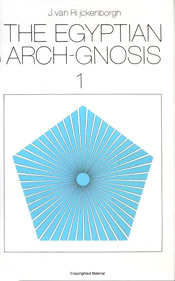Egyptian Arch-Gnosis Vol. 1
by Jan van Rijckenborgh

Book Description:
A commentary on the 'Tabula Smaragdina' (The Emerald Tablet) and the 'Corpus Hermeticum'. These two ancient Egyptian treatises attributed to Hermes Trismegistus reveal a message that has been handed down since humanity's earliest beginnings: that the fundamental obstacle to awareness of Gnosis is the I-central self, and that this state of separation can be healed through the resurrection of the 'Spirit-Soul' or 'Nous' in the human being. How this can come about is amply explained in the four volumes of 'The Egyptian Arch-Gnosis'.
About the Authors:
The two main authors whose works are published by the Rosycross Press, Jan van Rijckenborgh (1896-1968) and Catharose de Petri (1902-1990), devoted their lives to forming the School of the Golden Rosycross. Their goal was the formation of a group of people in whom the I-central consciousness had been shifted from its position as 'king' in their inner being, and restored to its proper role: that of 'servant' to the growing Spirit-Soul, the true Self or inner Christ. However, they were faced with the difficult task of building a bridge of understanding between this goal and the minds of people who, though they had a deep interest in the hidden side of life, saw it largely through the lens of the separative, I-central ego.
Throughout all the many hundreds of talks they gave, and the books they wrote, it is clear that their aim was to cut through the conditioning of the ego so as to give their pupils a distinct vision of what was required of them. To do this they expressed the essential teachings of Spirit-Soul rebirth in all kinds of different ways and considered them from countless angles. Often they found it necessary to speak in a rather emphatic way, and to depict in stark, bleak outlines the depth of human imprisonment in the material world. Always, they used texts, stories and symbolism drawn from all times and all places to illustrate their points, and to show that the transfiguristic path they were teaching was not new, but has been handed down - though often in veiled form - ever since the dawn of human development.
Thus, although the methods they taught were adapted to modern times, their teachings were essentially the same as those of earlier groups such as the Essenes, the Christian Gnostics, the Manichaeans and the Cathars, to name but a few.
Reviews and more information from Amazon »